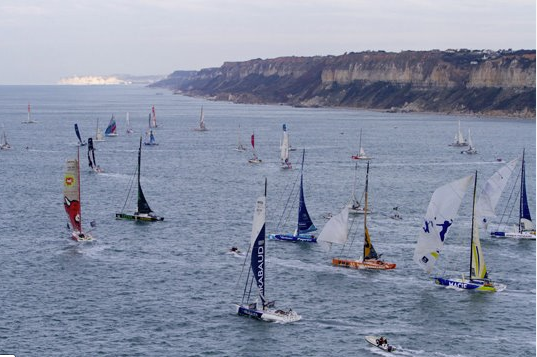Delaying race starts or finishing them early to reduce risks is a tricky path to tread. The truth is, we cherish ocean races not all will finish
One big change in offshore racing over the last
five or ten years or so has been the increasing assumption of responsibility by
race organisations for adverse weather that might be encountered by competitors.
Most event organisers continue to stress that
the decision to start a race and continue racing is the ‘sole and irrevocable
responsibility of the skipper’, yet more and more are delaying starts or even
finishing events early because of fears that conditions could overwhelm
competitors.
Inevitably, this leads to questions about
whether, or how, results are compromised. As an example, take the decision by
the organisers of the solo B2B race to shorten the course off the north-west of
the coast of Spain, giving just 12 hours’ notice. Britain’s Alex Thomson is one
of those who felt he lost out by being unable to position himself for this and
applied for redress.
Such decisions are getting more commonplace.
The Transat Jacques Vabre (TJV), which preceded the B2B, was delayed for
several days because of a forecast of bad weather. In past years, the Fastnet
Race has been delayed and so has the Vendée Globe.
The reasons are plain enough when you think of
the route taken by some of these races. The depression into which the TJV
racers would have sailed in November, and the one that worried the B2B
organisers last week, would likely have hit the fleet at the edge of the
Continental Shelf. It was sea state more than wind strength that was the great
concern. Invariably it’s waves not wind that are the wrecking ball.
If you take this logic to its fullest extent,
though, you might well ask why start a transatlantic race from northern Europe
in November at all? The simple answer is because these are traditional routes
with historically calculable conditions for which the sailors and boats should
aim to be fit.
But there is another dichotomy here. The
attrition rate and occasional near catastrophe to be expected accounts for a
big hunk of public interest. That’s exactly what has made races such as the
Route du Rhum, the TJV, OSTAR, the Whitbread/Volvo Ocean Race and the Fastnet,
among others, famously infamous. How many would follow a race that was a
low-risk tradewinds procession?
Most sailors understand these risks and don’t
mind them, What they tend not to like are constraints, particularly if they
feel disadvantaged by them, as happened last week in the B2B when the runway to
the finish in France was suddenly curtailed. Mike Golding was, as ever,
critical about this.
He has consistently opposed race organisers’
decisions to constrain race courses, even fighting against the introduction of
ice gates in the Vendée Globe in 2004, when he argued that they could replace
one risk with another. “That’s the danger of it,” he told me.
“You won’t have the manoeuvrability to dodge a weather system if it’s
looking grim.”
Safety has been the first consideration in all
these decisions. Starting the TJV late forced the race out of a prime weekend
TV slot so there was nothing commercial to be gained from it. But there are
some longer-term commercial advantages to the foreshortened finish of the B2B,
namely keeping the flock out of harm’s way.
The IMOCA fleet is depleted compared to four
years ago; big sponsorship money is in much shorter supply. The B2B is a
qualifier for the Vendée Globe next year and with the solo Transat not being
run next summer (traditionally this was the last qualification race before the
Vendée start), there is sense in getting everyone possible in now, even if it
means moving the goalposts a bit.
All race organisers are worried about waning
entries.
But the trouble with making these exceptions to
the rule of ‘sole responsibility’ is where do you stop? When precedents have
been set for changing the start and finish of once open ocean races, the
pressure is on for organisers to take charge of competitors dodging those weather
systems. It’s a hard thing to roll back.
Driving down the risks yet staying true to the
origins and appeal of these epic man-against-the-elements races is a tricky
path to tread.
It would be a pity if there was a ratchet
effect whereby sponsors and race followers began to set their expectations too
high, expecting every sailor to make the finish and seeking answers when that
doesn’t happen. In the real world of these arduous, long-distance, wintertime
races, it’s never going to be.
Though it makes sailing a very hard corporate
sell, the attrition rate is high and always will be, whether through gear
failure, damage, human error, bad luck or a shortfall in seamanship.
The drop-out rate of the Vendée Globe, for
instance, is generally around 30 per cent. That isn’t likely to change. The
race is a beast; one simply has to understand that it’s the nature of the
beast.
Against this we can weigh the great
self-sufficiency and tremendous professionalism of sailors in coping with
disaster when it does overtake them, and helping others in trouble. Few other
sports demonstrate such a degree of personal responsibility and raw heroism.
These are attributes that knock-out races have refined to a magnificent degree.




